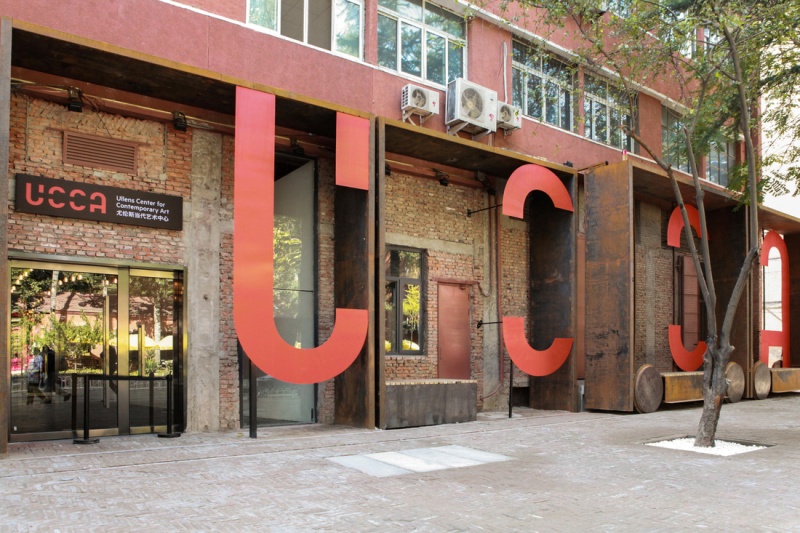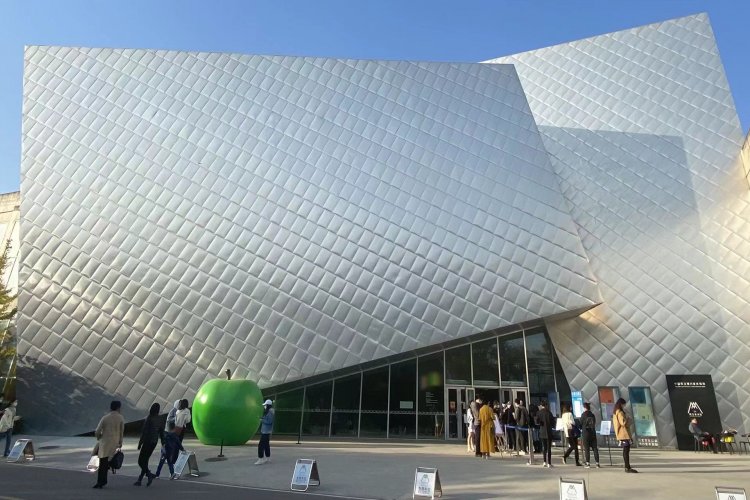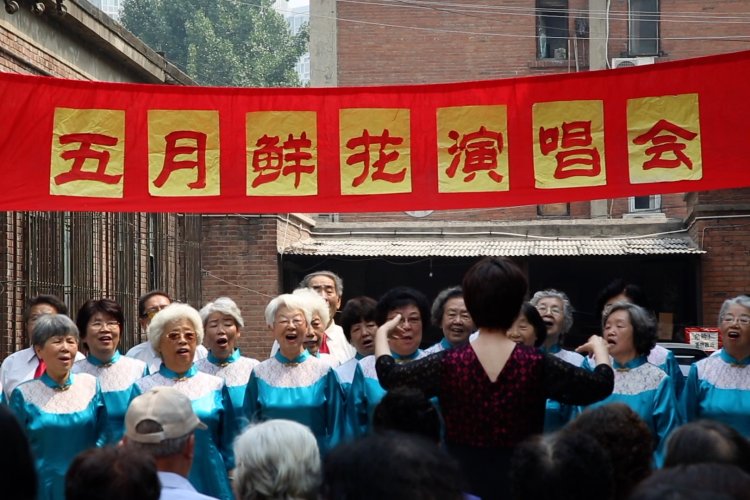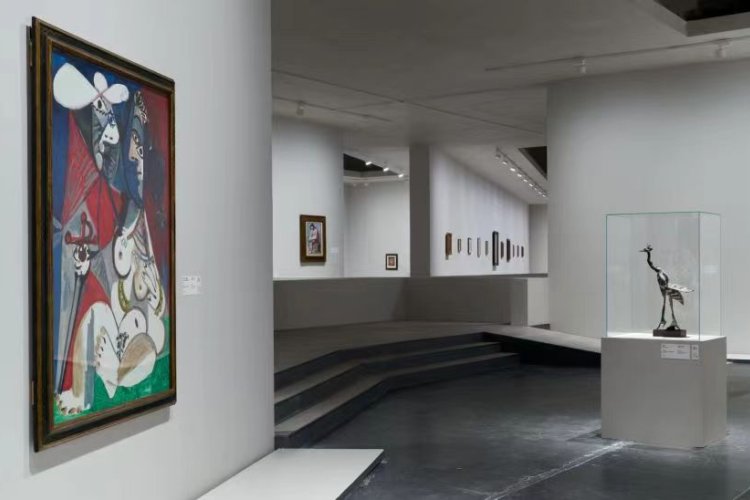Throwback Thursday: After 9 Years of Contemporary Art, UCCA Still At It, But Future Unclear
Throwback Thursday takes a look back into Beijing's past, using our nine-year-strong blog archives as the source for a glance at the weird and wonderful of yesteryear.
This month nine years ago, Beijing received one of its biggest boosts to its artistic endeavors that a pre- (and post-) Olympic China had ever seen, an addition to 798 that legitimized it as an arts destination in the eyes of the international art world.
On its opening night, the 8,000-square-meter Ullens Center for Contemporary Art (UCCA) played host to some of the biggest names in Beijing's art and fashion scene, a party fronted by the same couple that set up the space, Belgian multi-millionaires Guy and Myriam Ullens.
That night of suits and ties, Spanish dance troupes, and bacchanalia all seems like a distant memory now however, with Guy François Edouard Marie "Ullens" de Schooten Whettnall announcing earlier this year that he was looking to sell the gallery as well as his entire art collection, apparently wanting to offload his stock now that he's in his 80s.
What will happen to the gallery for now remains in the balance, with no buyer yet coming forward to shoulder what is basically the shell of a spruced-up munitions factory (albeit one designed by French architect Jean-Michel Wilmotte), given that the UCCA has no collection of its own. It's likely that the space will hobble on, funded by a mixture of sponsorships, trustee donations, and profits made in the gift shop.
Despite the announcement of the intended sale, the UCCA events calendar has remained active, with two exhibitions currently running – Hao Liang's Eight Views of Xiaoxiang and Wang Haiyang's New Directions – as well as a smattering of movie screenings and live performances.
Moving into 2017, it seems that the fate of the UCCA is still as uncertain as it was when Guy Ullens posed this concluding question to himself in a 2007 New York Times interview, before the space had even opened: “The key problem is going to be to keep the quality of the art very high ... Are we going to be good enough to survive? I don’t know.”
No matter what happens, at least we still have the below account of the lavish UCCA opening event, as described by former Beijinger writer Venus Lua, to remind us of what kicked off one of Beijing's best decades in art.
***
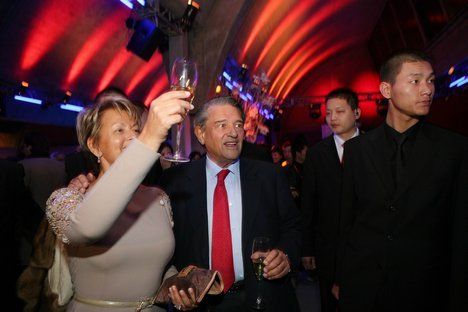
"C'mon, nobody actually looks at the art at the opening," a young architect with a big firm explained over the thump of a Bob Marley remix and the din of hundreds of buzzed upper-crusters, a glass of Moet dangling from his ringed fingers. Saturday's party for the Ullens Center of Contemporary Art (UCCA) – a veritable epicenter for the world's hottest art scene – marked the turning of a new page in Beijing's cultural world. Albeit, a very very shiny, expensive page.
After a private viewing at the center, partygoers moved to another Bauhaus-styled factory space nearby; fur and velvet abounded, fake diamonds and glasses of red wine covered the tables. Beforehand, the very very important people were treated to an opulent Chinese dinner within the walls of the Forbidden City.
Outside the party, there was a lavish (albeit toned-down) performance by the Spanish performance art troupe La Fura del Baus, which involved two dozen people dressed like Oompa Loompas, dangling like spiders from a crane rig and flailing to an electronic beat (see what we mean here, and their last appearance in 798 here). When the benefactors, Baron and Baroness Ullens showed up, they were surrounded by a bevy of towering bodyguards. At one point during the performance, a man wearing a headset and a black jumpsuit who was dutifully helping guide the crane contraption by rope, moved swiftly through the dazzled audience, until he hit upon the Baron's circle of bodyguards. He was promptly tackled. Art was not exactly on everyone's mind.
Said the architect, "People come back later to see the artwork, yo, once everyone's gone."
The DJs have stopped playing, but it's clear no one is going anywhere anytime soon. When the general public mobs the UCCA today, it will find the grandest testament yet to the unstoppable ascension of Chinese art. Arguably – and notwithstanding the burst of hype that's surrounded it – the UCCA is the biggest thing to hit China's art scene since, well, 798.
Fittingly, the center opens with an exhibition on the birth of China's art scene. ‘85 New Wave is a retrospective on the seminal art movement that marked the “explosive response” of independent Chinese artists disillusioned with the early '80s art scene. It features over 130 early works covering a range of media from artists like Xu Bing, Zhang Peili, Chen Zhen, Ding Yi, Song Haidong, and Gu Wenda. In keeping with its slight international bent, the Center's first site-specific commission, "To Allow the Light," is by American Lawrence Weiner.
At a press preview last Thursday, a gaggle of local and international media were seated beneath Xu Bing’s breathtaking Tian Shu (literally “heavenly book”), which consists of three long, religious-style scrolls hanging from one side of the ceiling to another, filled with what appear to be Chinese characters. In fact, each character is made-up; Xu even created wooden block type for his language by hand.
There were also some two dozen security guards present, a sign of how different this was from your regular 798 opening, and perhaps an indication of just how valuable the works of the Chinese artists being displayed as part of the ‘85 New Wave exhibition are becoming.
This was no ordinary gallery opening: the press in attendance (many of them ferried from the United States and Europe) sat before the center's core team, who explained its origins. There was Baron Guy Ullens and his wife Myriam (they sold 12 Turner watercolors at Sotheby's in London early this year to bankroll the museum, and will be drawing upon their 1,300 piece Chinese art collection), the center’s artistic director Fei Dawei, and chief curator Collin Chinnery. "This is not about individual desires but for the community," said Jan Debbaut, the senior artistic advisor who comes fresh from his gig as director of exhibitions at the Tate Modern.
Also in attendance was the museum's architect, Jean-Michel Wilmotte, who, along with Ma Qingyun, turned the 8,000 square meter factory, built in 1950 by German designers, into a modern gallery space. The walls are bathed in a soft white, with movable shutters on the ceiling windows; the effect is sleek, but notably without the cool, gray rawness of 798's other factory spaces.
A tour that followed which for many served as something of a brush up on the history of Chinese contemporary art. In the large southern nave, an enormous bare room with temporary walls showcases the main exhibit, while the building's northern part features an excellent time-line of Chinese art scene, complete with an array of ephemera from the past two decades.
That fits with the UCCA's stated mission: to open the art world to an ever more curious public. On top of a full program of exhibits and events, the center offers a valuable archive of art-related material, as well as cafes and a shop full of goodies. "We want this to be a final destination for people coming to 798," Mr. Ullens told the Beijinger.
"The big question is will they [the public] get in or not. Will they stay on the outside, or will they pay 3 euros (RMB 30) to get in? We'll see." (Students can enter for RMB 10.)
And perhaps the question of how to get the people all the way out to 798 is moot. "There's a lot of traffic here [in 798], a lot of people are coming into the area," he says. "But we’ll probably have to fix the transportation problem.”
One thing at a time, Baron.
More stories by this author here.
Email: tomarnstein@thebeijinger.com
WeChat: tenglish_
Instagram: @tenglish__
Photo courtesy of the UCCA

